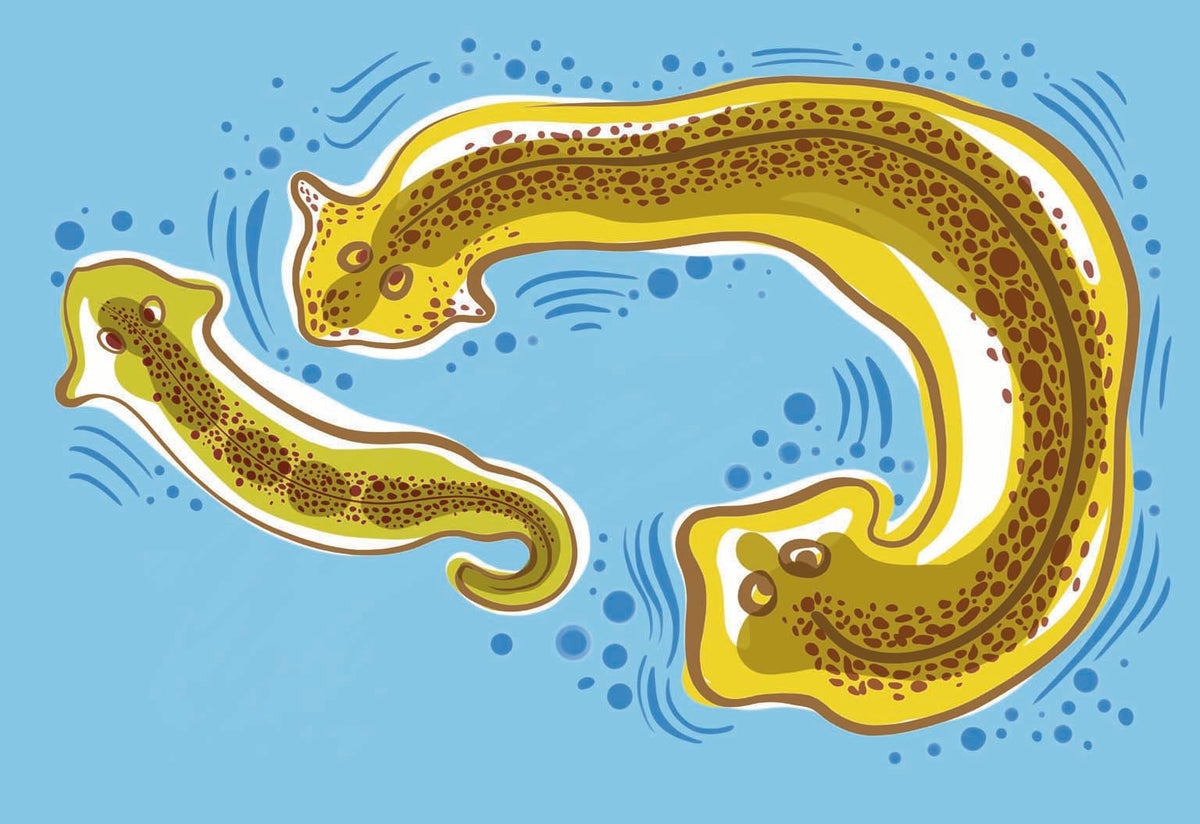Tiny clumps of cells show basic cognitive abilities, and some animals can remember things after losing their head
The planarian is nobody’s idea of a genius. A flatworm shaped like a comma, it can be found wriggling through the muck of lakes and ponds worldwide. Its pin-size head has a microscopic structure that passes for a brain. Its two eyespots are set close together in a way that makes it look cartoonishly confused. It aspires to nothing more than life as a bottom-feeder.
But the worm has mastered one task that has eluded humanity’s greatest minds: perfect regeneration. Tear it in half, and its head will grow a new tail while its tail grows a new head. After a week two healthy worms swim away.
Growing a new head is a neat trick. But it’s the tail end of the worm that intrigues Tufts University biologist Michael Levin. He studies the way bodies develop from single cells, among other things, and his research led him to suspect that the intelligence of living things lies outside their brains to a surprising degree. Substantial smarts may be in the cells of a worm’s rear end, for instance. “All intelligence is really collective intelligence, because every cognitive system is made of some kind of parts,” Levin says. An animal that can survive the complete loss of its head was Levin’s perfect test subject.



So then what excuse do people with only 2 brain cells have? 🤔
You tell us